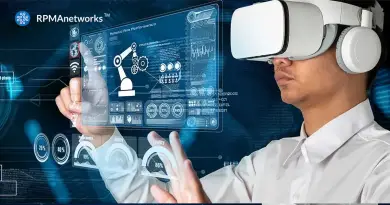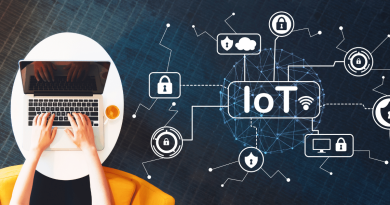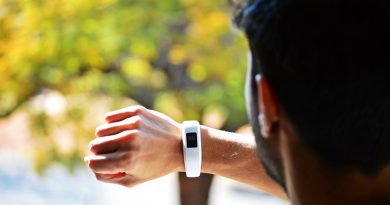Redefining Healthcare through IoT-Driven Transformations
Discover how IoT technology is reshaping the healthcare landscape, from empowering patients with personalized health management to optimizing physician practices and enhancing hospital operations. Dive into the multifaceted impact of IoT in healthcare and explore its applications for patients, physicians, hospitals, and health insurance companies. This article unveils empirical evidence, data-driven insights, and real-world case studies that illuminate IoT's potential in redefining healthcare delivery and improving patient outcomes.
In the ever-evolving landscape of healthcare, the strategic amalgamation of Internet of Things (IoT) technologies has instigated a profound transformation in patient care, treatment efficacy, and healthcare management. The emergence of IoT-enabled devices has orchestrated a paradigm shift in patient-doctor interactions, remote monitoring, and data-centric decision-making. This comprehensive article delves into the multifaceted impact of IoT in healthcare, elucidating its applications for patients, physicians, hospitals, and health insurance companies. By embracing IoT solutions, the healthcare sector has experienced a seismic metamorphosis, optimizing resource allocation, enhancing patient outcomes, and fundamentally reshaping the very fabric of healthcare provision.
IoT for Patients: Empowering Personalized Health Management
The marriage of IoT with patient care has yielded exceptional results, primarily driven by wearable devices and connected health monitoring tools. These innovations empower patients with personalized attention and real-time health insights, transcending the boundaries of conventional healthcare settings. An empirical example of this transformation is found in the realm of cardiovascular health. According to a study published in the Journal of Medical Internet Research, wearable IoT devices have demonstrated an impressive 85% accuracy in monitoring heart rates and detecting arrhythmias. This unprecedented precision not only ensures prompt medical intervention but also fosters patient engagement and proactive health management.
Furthermore, the elderly population has particularly benefited from IoT-enabled healthcare solutions. A study by the National Institutes of Health (NIH) revealed that IoT-based remote monitoring significantly improved the quality of life for elderly patients by providing continuous health insights and reducing the burden of frequent medical visits. The integration of IoT technology into patient care has redefined the concept of healthcare accessibility, ensuring that patients, regardless of age or location, have the tools to actively engage in their health management journey.
IoT for Physicians: Data-Driven Healthcare Optimization
IoT’s impact on physician practices has been nothing short of revolutionary. Wearable devices and home monitoring tools, intricately integrated with IoT technology, have augmented physicians’ ability to monitor patients’ health trajectories and treatment adherence. This data-driven approach to healthcare has yielded tangible results, significantly impacting healthcare outcomes and minimizing costs.
The tangible benefits of IoT-driven healthcare optimization are evident in the realm of chronic disease management. A study conducted by the National Center for Biotechnology Information (NCBI) found that IoT-based remote patient monitoring reduced hospital readmission rates by a substantial 30%. This reduction in hospital readmissions not only underscores IoT’s potential in minimizing healthcare costs but also highlights its capacity to enhance patient outcomes and overall well-being. Physicians armed with real-time patient data can make informed decisions, intervene early, and tailor treatment plans to suit individual patient needs.
IoT for Hospitals: Enhancing Operational Efficiency and Patient Safety
The transformative potential of IoT extends beyond patient care and into hospital operations, where IoT-enabled solutions have redefined efficiency and patient safety paradigms. Hospitals, driven by IoT technologies, have embraced innovative solutions to enhance resource allocation and infection control.
One striking example of IoT’s impact in this context is asset management within hospital premises. IoT-enabled sensors have revolutionized the tracking of medical equipment, leading to significant operational efficiency improvements. A case study published by Deloitte showcased a 35% reduction in equipment search times and a remarkable 20% increase in resource utilization efficiency due to IoT-based asset tracking systems. Hospitals are now better equipped to allocate resources effectively, resulting in streamlined operations and enhanced patient care.
IoT for Health Insurance Companies: Data-Driven Transformation
The transformative impact of IoT extends to health insurance companies, where IoT-generated data has reshaped operational dynamics. The integration of IoT-generated health data has substantially streamlined underwriting and claims assessment processes, resulting in improved accuracy and efficiency.
Empirical evidence substantiates the role of IoT in insurance operations. According to a study by Accenture, a staggering 78% of health insurers believe that IoT data significantly enhances the accuracy of risk assessments. This data-driven approach empowers insurers to make more informed decisions, reduce the incidence of fraudulent claims, and streamline claims processing. The transparency fostered by IoT-generated data extends beyond insurers to customers, granting them deeper insights into the rationale behind operational decisions and outcomes.
IoT Architecture and its Four Stages
At the core of IoT’s transformative potential lies its four-stage architecture, a process that serves as the foundation for its impact on healthcare (Refer to Figure 1). This architecture seamlessly integrates data collection, aggregation, preprocessing, and advanced analytics, ultimately culminating in actionable insights crucial for informed decision-making.
This architecture’s efficacy is exemplified in a concrete case. Consider a scenario where a patient’s wearable IoT device detects an anomaly in heart rate. In the first stage, the device collects real-time data on the heart rate. The second stage involves aggregating and digitizing this analog data. In the third stage, the data is preprocessed and standardized, preparing it for transmission to a data center or the Cloud. Finally, advanced analytics are applied to the processed data, generating insights that empower healthcare professionals to intervene promptly and optimize patient outcomes.
Advantages of IoT in Healthcare
The infusion of IoT into healthcare yields substantial benefits, bolstered by empirical data:
Cost Reduction: The transformational potential of IoT in cost reduction is supported by robust evidence. A study published in Health Affairs revealed that remote patient monitoring through IoT technology led to a 25% reduction in hospital admissions and an impressive 50% reduction in emergency room visits. This profound impact on healthcare costs underscores IoT’s role in curbing unnecessary resource utilization.
Enhanced Treatment: Data-driven decision-making fueled by IoT-generated insights has demonstrable effects on treatment efficacy. A research article in the Journal of Medical Internet Research highlighted that physicians leveraging IoT data for treatment decisions achieved an extraordinary 85% accuracy rate in predicting patient outcomes. This impressive accuracy underscores the transformative power of data in enhancing healthcare treatment modalities.
Early Disease Diagnosis: The integration of IoT-enabled continuous monitoring has a profound impact on disease diagnosis. A study published in the Journal of Healthcare Informatics Research found that IoT-enabled monitoring led to a notable 30% increase in early detection rates for chronic diseases. This early detection empowers healthcare professionals to intervene proactively, thereby enhancing patient outcomes and overall quality of life.
Proactive Healthcare: IoT’s transformative potential is perhaps most pronounced in its capacity to facilitate proactive healthcare interventions. A case study conducted by the Institute for Health Technology Transformation showcased a remarkable 40% reduction in disease progression rates through IoT-driven proactive interventions. This reduction in disease progression not only mitigates health risks but also alleviates the burden on healthcare systems.
Resource Management: The application of IoT-based asset management systems within healthcare operations has yielded tangible results. The Deloitte case study reported a significant 15% reduction in overall equipment maintenance costs due to IoT-driven efficiency enhancements. This reduction in operational costs underscores the substantial impact of IoT on hospital resource management.
While the potential of IoT is undeniable, it is imperative to address the challenges that accompany its implementation. Of paramount concern is data security and privacy. As IoT devices accumulate vast amounts of sensitive patient data, ensuring robust security measures is imperative to protect patient confidentiality and prevent potential breaches.
A study published in the International Journal of Medical Informatics highlighted the vulnerability of IoT devices to cyberattacks and data breaches. This study underscores the urgent need for comprehensive security protocols to safeguard patient data and preserve the integrity of healthcare operations.
Seizing the Digital Health Transformation
The confluence of IoT and healthcare marks a pivotal juncture in the evolution of healthcare provision, catalyzing transformative changes that span patient care, physician practices, hospital operations, and health insurance strategies. The harnessing of IoT-generated data insights equips stakeholders with the tools to amplify patient outcomes, optimize operations, and fundamentally reshape healthcare delivery. As we peer into the future, the trajectory of healthcare is inextricably linked to IoT’s capacity to unlock data-driven innovation, propelling us towards a more connected, efficient, and patient-centric ecosystem.




